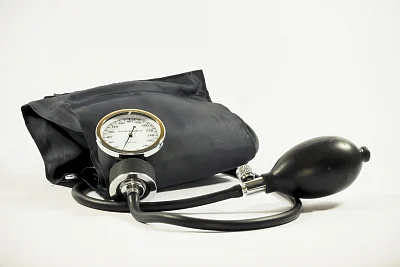Hypotension is the term used for diminished blood pressure. A blood pressure reading lower than 90 millimeters of mercury (mm Hg) for the top number (systolic) or 60 mm Hg for the bottom number (diastolic) is generally considered low blood pressure.
According to the doctors at Mayo Clinic, having low blood pressure is good in most cases but low blood pressure can make a person feel tired or dizzy. It can be even life-threatening in some cases.
In such conditions, hypotension can be a sign of underlying condition that should be treated. Blood pressure of a person also varies from moment to moment with respiration, emotion, exercise, alcohol, tobacco, bladder distension, temperature, and pain.
Let us understand the causes, symptoms, diagnosis and treatment of the condition in detail.
Low Blood Pressure: Symptoms
Low blood pressure signals an underlying problem especially when it falls suddenly or is accompanied by signs and symptoms as mentioned by the doctors of Cleveland Clinic:
Dizziness
Lightheadedness
Fainting
Blurred vision
Nausea
Weakness
Tachycardia
Pale skin
Lack of concentration
Low Blood Pressure: Causes
Blood pressure is the measurement of the pressure in your arteries during the active and resting phases of each heartbeat.
Systolic pressure: The top number in a blood pressure reading is the amount of pressure your heart produces when it pumps blood through your arteries to the rest of your body.
Diastolic pressure: The bottom number in a blood pressure reading refers to the amount of pressure in your arteries when your heart is at rest between beats.
Blood pressure varies from moment to moment depending on:
Body position
Breathing rhythm
Physical condition
Food you consume
Medications you take
Time of day
Blood pressure is usually low at night and increases sharply on waking up. Health conditions that cause low blood pressure include:
Heart problems
Endocrine problems
Dehydration
Blood loss
Severe allergic reactions
Lack of nutrients in your diet
Medications that cause low blood pressure include water pills or diuretics such as furosemide or lasix, hydrochlorothiazide or microzide, alpha blockers such as prazosin, beta blockers such as atenolol and propanolol, even medicines for depression and Parkinson's Disease.
Low Blood Pressure: Diagnosis
The goal of diagnosis of low blood pressure is to find the underlying condition that causes low blood pressure and that why the tests shall be taken for those conditions. Few of the tests that help diagnose low blood pressure include (Healthline):
Blood tests that can be taken for keeping a tab on the overall health as well as for the diagnosis of low blood sugar levels, high blood sugar levels and low blood cells count that cause low blood pressure.
ECG in which soft patches are attached to the skin of the chest, legs and arms to detect the heartbeat and shows it in the form of a graph.
A tilt table test can diagnose the change in blood pressure due to the change in position.
Low Blood Pressure: Treatment
There are usually no symptoms or mild symptoms of low blood pressure which requires no treatment but in severe cases the goal of the treatment is to raise the blood pressure in order to reduce the signs and symptoms.
You can raise your blood pressure depending on your age, overall health and type of blood pressure (US National Institutes of Health).
A low salt diet is recommended for the people to control their blood pressure but people with the problem of low blood pressure can increase their salt intake.
Drinking more water can help treat the symptom of dehydration that gives rise to the problem of low blood pressure. This shall improve the blood's volume as well.
Certain medications like fludrocortisone can be used to increase the blood's volume and midodrine can be used to treat chronic orthostatic hypotension by restricting the expansion of blood vessels.

